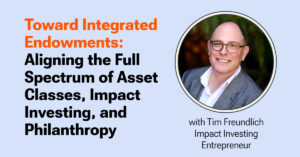Since nonprofits have limited budgets to begin with, any dip in funding can impact their operations and require them to rethink their resource allocation. That’s why it’s crucial to understand your organization’s current financial situation.
Regular reporting and analysis will help you keep your nonprofit stable in the face of uncertainty and bounce back from revenue declines. By compiling nonprofit financial statements in accordance with Generally Accepted Accounting Principles (GAAP), developing a robust operating budget, and filing a Form 990 with the IRS, you’ll better understand how to adjust your financial management strategy to fuel growth and mission fulfillment.
Nonprofit Financial Statements
Nonprofit financial statements are documents that summarize your organization’s financial activities and health. They help you make sound financial decisions, improve strategic planning, manage risks, and increase transparency with stakeholders.
We’ll review the three types of financial statements required under GAAP, plus the Statement of Functional Expenses, which allows organizations to meet the requirement of providing a functional expense analysis. Here’s a quick breakdown of each statement:
Alt Text: Infographic showing information about nonprofit financial statements, as explained in the text below.
Statement of Financial Position
The Statement of Financial Position—otherwise known as a balance sheet—helps you assess your organization’s financial health, flexibility, and liquidity as of a specific date.
The main categories in this document are:
- Assets. Assets are resources your nonprofit owns or controls. These include current assets you can convert to cash quickly, such as cash and cash equivalents, accounts receivable, pledges receivable, prepaid expenses, and inventory. They also include noncurrent assets your organization intends to hold for over a year, such as land, buildings, and equipment.
- Liabilities. Liabilities are your nonprofit’s financial debts or obligations. These include current liabilities payable within the next year, such as accounts payable, accrued expenses, and deferred revenue. They also include noncurrent liabilities payable in more than a year, such as mortgages and long-term lease obligations.
- Net Assets. The difference between your assets and liabilities is your net assets. These are the financial resources available to your organization, so generally, positive net assets indicate a healthier financial position than negative net assets.
Statement of Activities
The Statement of Activities, also known as an income statement, reports on your revenues and expenses for a specific period. It helps internal and external stakeholders understand how you’re managing resources.
This document reports on your organization’s:
- Revenues and Support. Revenues and support are resources or funds your organization receives, such as revenue generated from selling goods and providing services or support secured from individual donations and fundraising events.
- Expenses. Expenses are costs your nonprofit incurs to support its mission. You’ll categorize expenses as program, management and general, or fundraising expenses.
- Change in Net Assets. The difference between your revenues and expenses is your change in net assets, which tells you how your financial resources have changed over the period.
Statement of Cash Flows
Your Statement of Cash Flows shows how cash moves in and out of your organization during a specific time period. It indicates whether this cash comes from operating, investing, or financing activities.
The main categories in this document are:
- Cash Flows from Operating Activities. Operating cash inflows may include, for example, funds from donations, program fees, grants, and membership dues. Operating cash outflows may include staff salaries and wages, utilities, supplies, and rent.
- Cash Flows from Investing Activities. Investing cash inflows include proceeds from sales or maturities of your investments, while outflows include purchases of investments, property, and equipment.
- Cash Flows from Financing Activities. Financing cash inflows may include lines of credit and loan proceeds. Financing cash outflows include debt payments like a mortgage.
- Changes in Cash, Cash Equivalents, and Restricted Cash. Lastly, you’ll note your cash, cash equivalents, and restricted cash at the beginning and end of the period. That way, you can calculate how your cash flows have changed over time and implement strategies to optimize cash flow management.
Statement of Functional Expenses
The Statement of Functional Expenses reports on the nature and function of your expenses. This document helps demonstrate your resource allocation to stakeholders and accurately report expenses on your Form 990.
This document takes into account:
- Program Expenses. Program expenses are costs directly related to your mission-oriented services. For example, a homeless shelter buying toiletries for residents would categorize that purchase as a program expense.
- Supporting Activities. All other expenses fall under supporting activities, which can be broken down further into three main sub-categories:
- Management and General Expenses, which relate to your nonprofit’s overall operations and management.
- Fundraising Expenses, which include costs arising from donation and grant solicitation.
- Membership Development Expenses, which include costs associated with new member recruitment, membership dues collection, and member relations.
Other Essential Financial Documents
In addition to financial statements, there are several other financial documents and reports your organization should compile. We’ll review two of the most important: your operating budget and Form 990.
Operating Budget
Your operating budget acts as your financial roadmap, allowing you to plan for expenses and allocate resources. While your operating budget deals with your entire organization’s annual expenses and revenue, you may also have specialized capital, program, and grant budgets.
The main categories of your operating budget include:
- Revenues and Support. Here, you’ll include the revenue you expect to generate within the next year. These funds may come from various sources, including individual donations, grants, membership dues, program fees, in-kind donations, corporate philanthropy, investment returns, consulting fees, and rental income.
- Expenses. You’ll also project the program, management and general, and fundraising expenses you expect to incur within the next year. Later on, you’ll record your actual expenses within your Statement of Activities and Statement of Functional Expenses.
To develop an effective nonprofit budget, YPTC’s nonprofit budgeting guide recommends reviewing historical financial data, allocating enough to overhead to build capacity, incorporating flexibility, and monitoring your budget so you can make adjustments as needed.
Form 990
Form 990 is an annual tax form that many nonprofits must file to maintain compliance with IRS regulations and tax-exempt requirements. This form requires you to record your yearly revenue and expenses as well as other similar elements of GAAP-based financial statements, so compiling accurate financial statements will help you fill out your Form 990 efficiently and accurately.
Since your Form 990 is publicly available after you file it, you can use it to promote transparency with stakeholders and share what your organization has accomplished over the past year.
With a better understanding of these key nonprofit financial statements and reports, you’ll be well-equipped to compile and analyze them, allowing you to manage your organization’s finances more effectively. If you need help with any stage of financial reporting and analysis, contact a nonprofit accounting firm.
Jennifer Alleva

Jennifer Alleva is the Chief Executive Officer at Your Part-Time Controller, LLC (YPTC), a leading provider of nonprofit accounting services and #65 on Accounting Today’s list of Top 100 accounting firms. Jennifer brings over three decades of expertise in accounting and leadership to her role as CEO of YPTC.
When Jennifer joined YPTC in 2003, the firm consisted of just over 10 staff members. Since then, she has helped grow YPTC into one of the fastest-growing accounting firms in the country.
Jennifer’s accomplishments include her tenure as an adjunct professor at the University of Pennsylvania Fels Institute, her frequent speaking engagements on nonprofit financial management issues, her role as the founder of the Women in Nonprofit Leadership Conference in Philadelphia, and her launch of the Mission Business Podcast in 2021, which spotlights professionals and narratives from the nonprofit sector.

